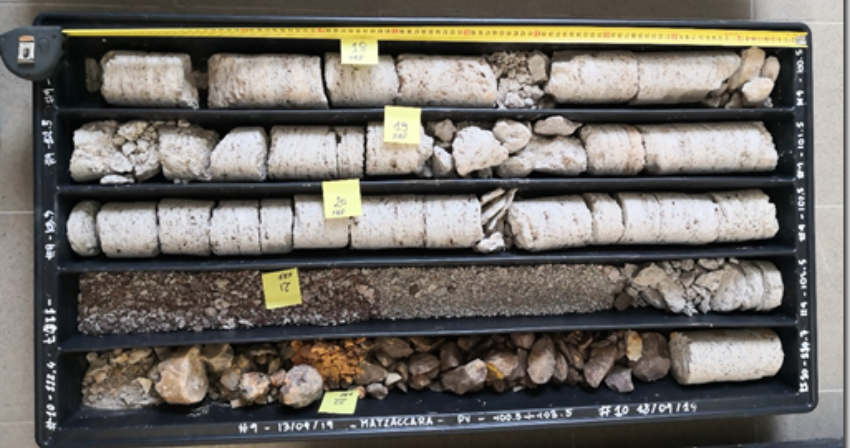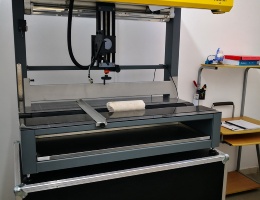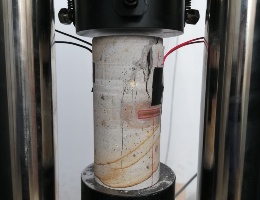Analysis and characterization of rock formations in Sulcis
CEEP (Centro Eccellenza sull’Energia Pulita - Clean Energy Centre of Excellence) research activities as part of the studies on monitoring geological confinement systems.
Date:
28 September 2021
The Sulcis basin, although not suitable for the geological confinement of carbon dioxide on an industrial scale, is an excellent site for the experimental development of advanced technologies for the geological storage of CO2 and the monitoring of confinement sites, as well as for the study of interactions between the caprock (the insulating layer of rock that prevents, in industrial confinement sites, the upwelling of injected CO2) and the reservoir (the porous rocks in which the CO2 is confined to).
Thanks to the analysis equipment available at the Sotacarbo laboratories and the expertise of the staff and scientific partners, the area was extensively characterized. Various types of rock characterization studies were conducted, particularly in the Mount Ulmus area: single- and tri-axial mechanical tests, permeability analyses, ultrasonic pulse propagation, X-ray fluorescence and rock core scans. These studies, based on various analysis techniques, are of considerable scientific value on the one hand and are characterized by very limited costs on the other. It is therefore a strategic activity both for the direct return in terms of scientific production and, above all, for the possible spin-offs in terms of collaborations, contracts and research projects.
Structural analyses aim to assess the integrity of the caprock and the potential diffusion of CO2 into the reservoir. In parallel, the results of seismic reflection tests enable the stratigraphic and structural framework of the subsurface to be delineated. Core tests allow the petrographic and geophysical characterization of the rock formations of the caprock-reservoir system. Furthermore, a network of temporary seismic stations enables the definition of the seismic baseline in the studied area.
The analysis of well water samples using ion chromatography led to the identification of the hydrogeochemical facies and the detection of trace elements such as bromine and lithium, indications of hydrothermal activity. In parallel, some wells in the area are sampled to trace gaseous species and thus determine the geochemical baseline. Continuous monitoring probes have been installed in several wells to detect and record temporal changes of temperature, pH, dissolved CO2 and CH4 in the water.
Several further analyses are currently being developed to complete the characterization and enable the full processing of the Sotacarbo Fault Lab results.
Last update
06/11/2024, 12:03



